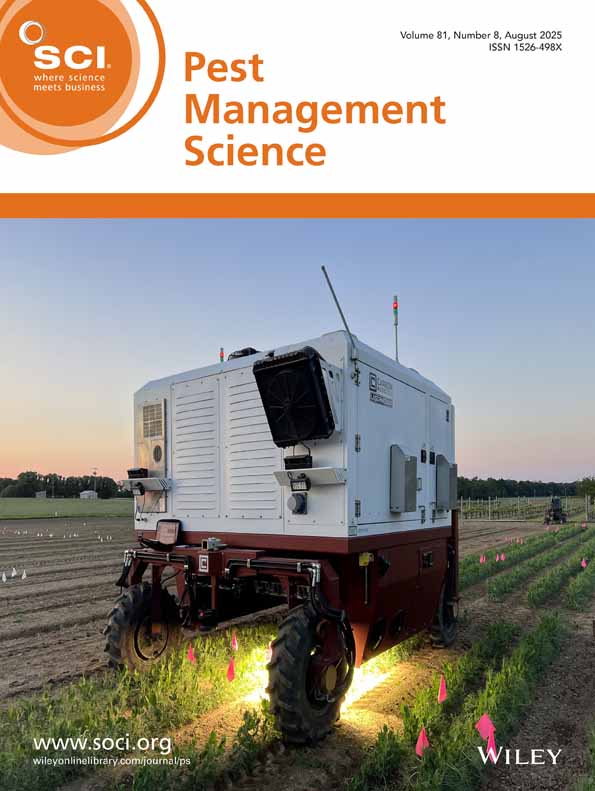Transformation of barban and analogues by Pseudomonas alcaligenes isolated from soil†
Preliminary results were presented at the Sixth International Congress of Pesticide Chemistry. Ottawa. Canada. 1986.
Abstract
Chlorbufam and barban are two common herbicides used for the control of weeds. A bacterial strain isolated from soil and identified as Pseudomonas caligenes was able to hydrolyse chlorbufam with the production of 3-chloroaniline. However, barban was metabolised without production of 3-chloroaniline. A study has been made of the transformation by Pseudomonas alcaligenes of structural analogues of these two herbicides (but-2-ynyl 3-chlorocarbanilate, butyl 3-chlorocarbanilate, 4-hydroxy-but-2-ynyl 3-chlorocarbanilate) and cinnamyl chloride. It was shown that barban gave a water-soluble metabolite by reaction of the propargyl chloride group of this compound. The same reaction was obtained with the allyl chloride group of cinnamyl chloride.
The water-soluble metabolite was identified as a glutathione conjugate. The pH and composition of the medium have a considerable influence on barban metabolism.




